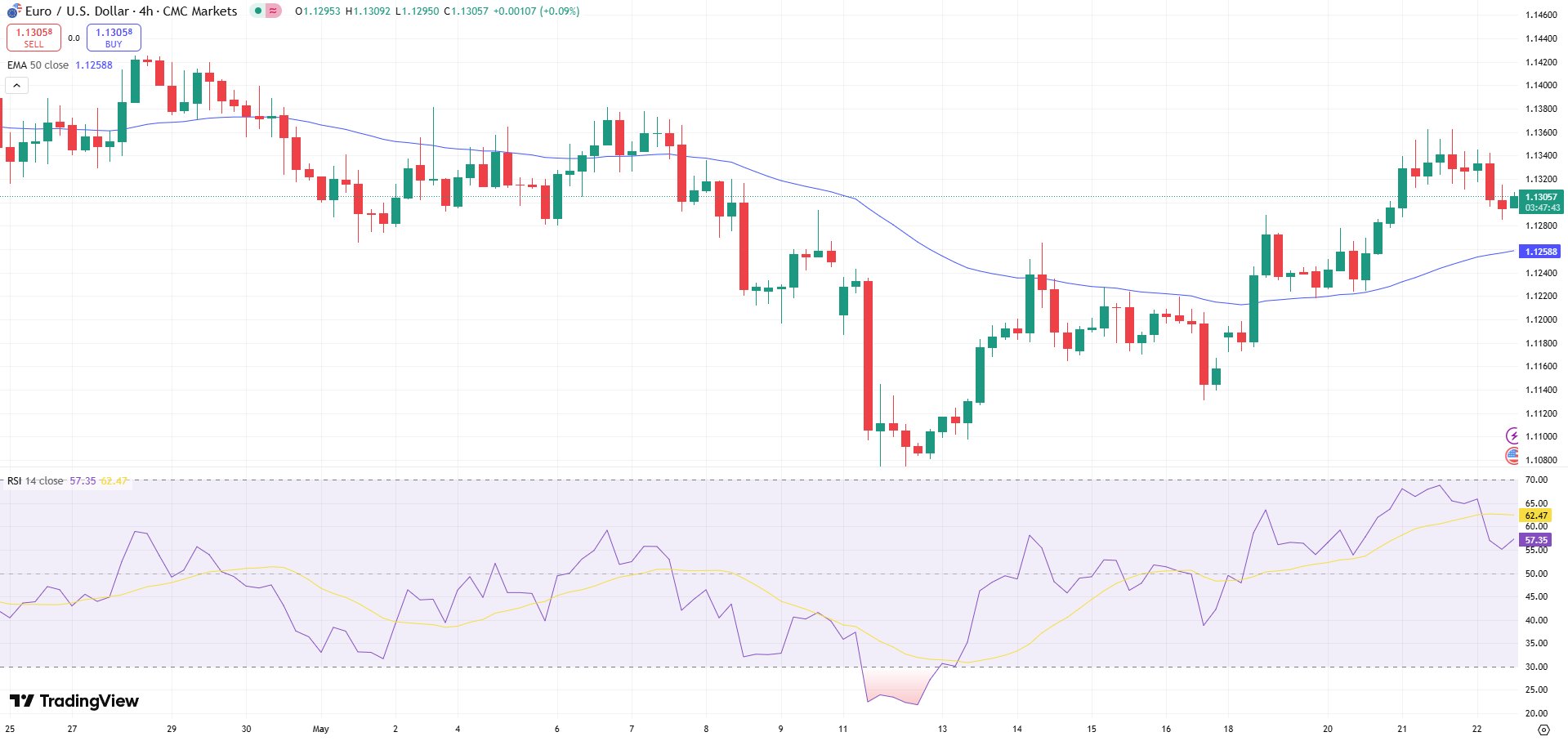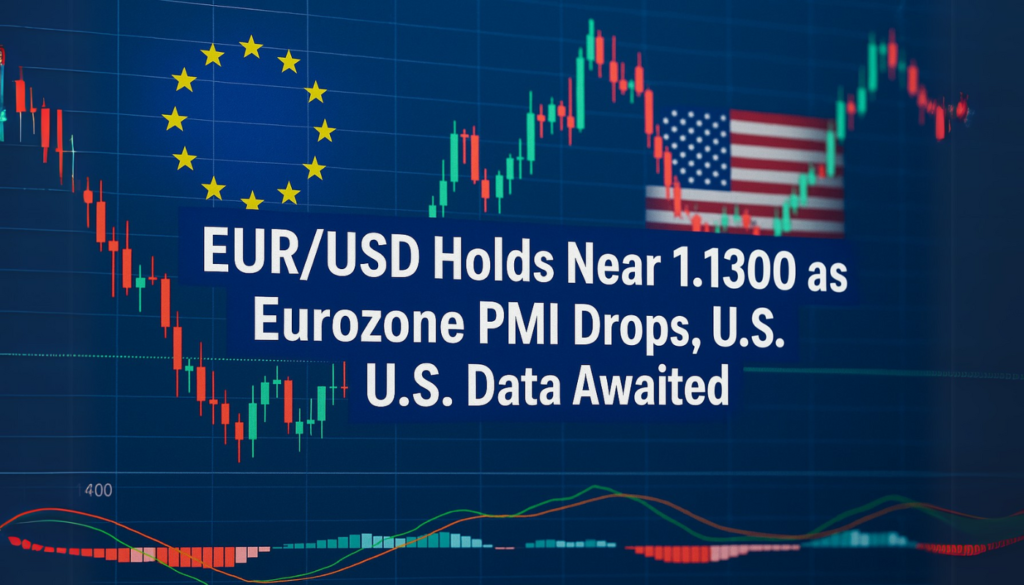The euro held its ground against the U.S. dollar on Thursday, with EUR/USD hovering near 1.1300, as investors digested a set of disappointing purchasing managers’ index (PMI) figures from the Eurozone and Germany.
At mid-European session levels, the pair traded within a tight daily range, reflecting subdued market appetite amid mixed economic signals.
Flash May PMIs released by Hamburg Commercial Bank (HCOB) showed a contraction in private-sector activity across the region:
- Germany Composite PMI fell to 48.6, down from 50.1 in April
- Eurozone Composite PMI slipped to 49.5, versus 50.4 previously
Both readings dipped below the key 50.0 threshold, which separates expansion from contraction, signaling renewed concerns about economic momentum in the bloc.
Dr. Cyrus de la Rubia, Chief Economist at HCOB, commented, “May’s snapshot is not pretty. Companies are only cautiously optimistic. The expectations index remains well below its long-term average.”
ECB Outlook Turns Cautious
The disappointing PMI data may complicate the European Central Bank’s (ECB) policy path. While officials have recently avoided committing to a rate cut in June, weakening activity could tip the balance.
Key takeaways:
- Investor expectations for a June cut may be revised upward
- Weak PMIs raise concerns over demand-side fragility
- Euro struggles to stay buoyant amid uncertain policy outlook
The euro’s limited reaction so far suggests markets are waiting for additional confirmation, particularly from across the Atlantic.
U.S. PMI Data in Focus
Later Thursday, traders will shift their attention to the U.S. S&P Global Composite PMI for May. The release could offer fresh direction for EUR/USD, particularly if it signals ongoing economic strength in the U.S.

Market implications:
- Composite PMI > 50 could boost USD, pressuring EUR/USD lower
- A softer print may ease dollar demand, providing temporary support for the euro
In recent sessions, the dollar has shown resilience amid strong economic readings and sticky inflation, which have tempered rate cut bets for the Federal Reserve.
With both central banks navigating conflicting data, EUR/USD is poised for sharper moves once the U.S. figures are released.


